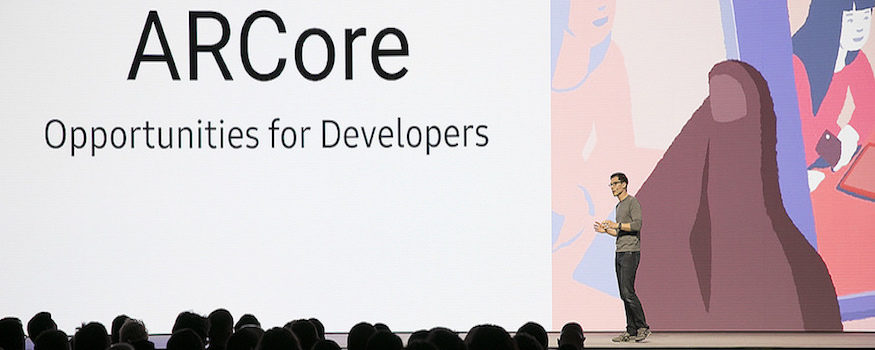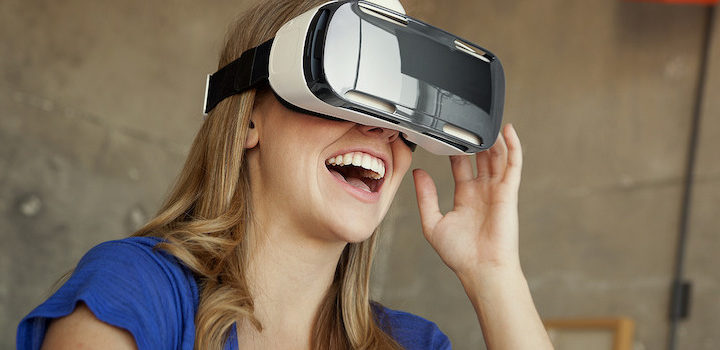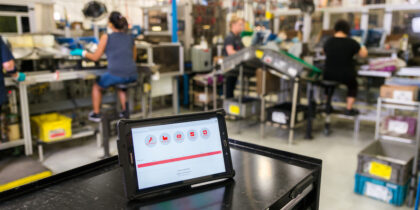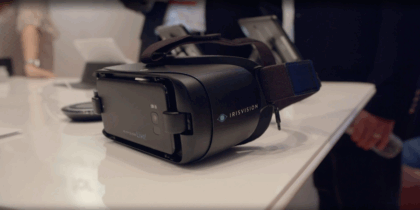Smartphone augmented reality (AR) is going to be “the next major shift in mobile computing,” according to Nathan Martz, a product manager at Google. Speaking at the Samsung Developer Conference in San Francisco on October 19, Martz told a crowd of developers and entrepreneurs about the importance of gearing up to meet this trend to provide smartphone users with AR experiences at Android scale.
To prepare developers and enterprises to create the next generation of smartphone AR apps, Martz highlighted the importance of differentiating fundamental features and best practices.
He emphasized that while smartphones have become much more powerful over the past decade, with an incredible diversity of apps, the way these phones understand the world — via various sensors like GPS and cameras — has stayed largely the same. This is why AR is so important from a developer and business standpoint — the way smartphones understand the world is on the verge of dramatically changing due to this technology.
A Technological Shift
“In our view at Google, AR really marks the next big shift in mobile computing,” explained Martz. “If you think about AR, it’s fundamentally a combination of advances in computer vision and machine learning, combined with these incredibly powerful computers that all of us carry around in our pockets. The aggregate of those allows you — the developers — to actually take visual information and present it in the context of the real world, exactly where it’s most useful and accessible.”
Martz painted an exciting picture of AR’s capabilities and influence, noting that the technology enables users to shop for furniture without leaving the comfort of their home. “You can access the world’s largest catalog of couches or rugs, you can place them in your room at scale and see the way they will be lit as if they were actually there, including texture and real-world lighting,” he said.
Learn the Difference Between AR and VR
What are some of the best use cases for virtual, mixed and augmented reality? Download Now
He added that because AR understands the world and new tools that are set up to inhabit that world, it can help users learn about complex real objects. “You can finally learn how to make a good cup of coffee with your office espresso machine,” he joked.
Because AR allows smartphones to understand a user’s position and orientation in the world with a great deal of precision, Martz predicted that the technology will transform navigation, allowing people “to reliably and precisely navigate our world, both indoors and outdoors.”
And in the realm of communication and gaming, Martz shared that AR is going to “allow us to have fun, express our ideas and personalities with other people and blur the realm of the world — the real world and the digital world — in fun and compelling ways.”
A Long-Term Effort and New Partners
Google has been working on developing AR since 2014 through Project Tango, a custom sensor suite integrated into certain Android phones that enables high-quality smartphone AR. With Android now the world’s most popular mobile platform with reportedly more than 2 billion active devices, Google recognized the huge opportunity to scale up and bring AR to the world at Android scale.
Central to this vision is Google’s ARCore framework, based on a new AR-centric technology that takes the algorithms from Tango and allows for software implementation on commodity phones without requiring any custom sensors or hardware modification.
On October 18, Samsung and Google announced a partnership to bring the ARCore framework to Samsung’s line of Galaxy smartphones. ARCore — which works on qualified Android devices (Android N) — is currently designated for a developer preview, allowing developers to start tinkering with its capabilities.
Martz shared that after this preview, ARCore will be ready to run on 100 million Android devices — an incredible amount of scale for such a new technology. “At Google, we’re going to be working through the entire AR ecosystem to scale in 2018 and beyond, to provide you as the developer with the widest possible addressable market, but also a guarantee of a high-quality AR experience,” he said.
Martz concluded by encouraging the audience to think of AR as both a feature and a foundation. “A question we get asked a lot is, ‘I’ve got an app and it’s great, it has users, it monetizes really well — do I need to start from scratch to take advantage of AR?’ And the answer is, no, not at all. AR, especially on a phone, is a fantastic additional capability and feature, an enhancement, not something that makes you have to rethink things from the ground up. So definitely don’t feel in any way pressure technically to start from the ground up just because you’ve adopted AR.”
See how augmented reality and immersive experiences are already being used as a business tool.








